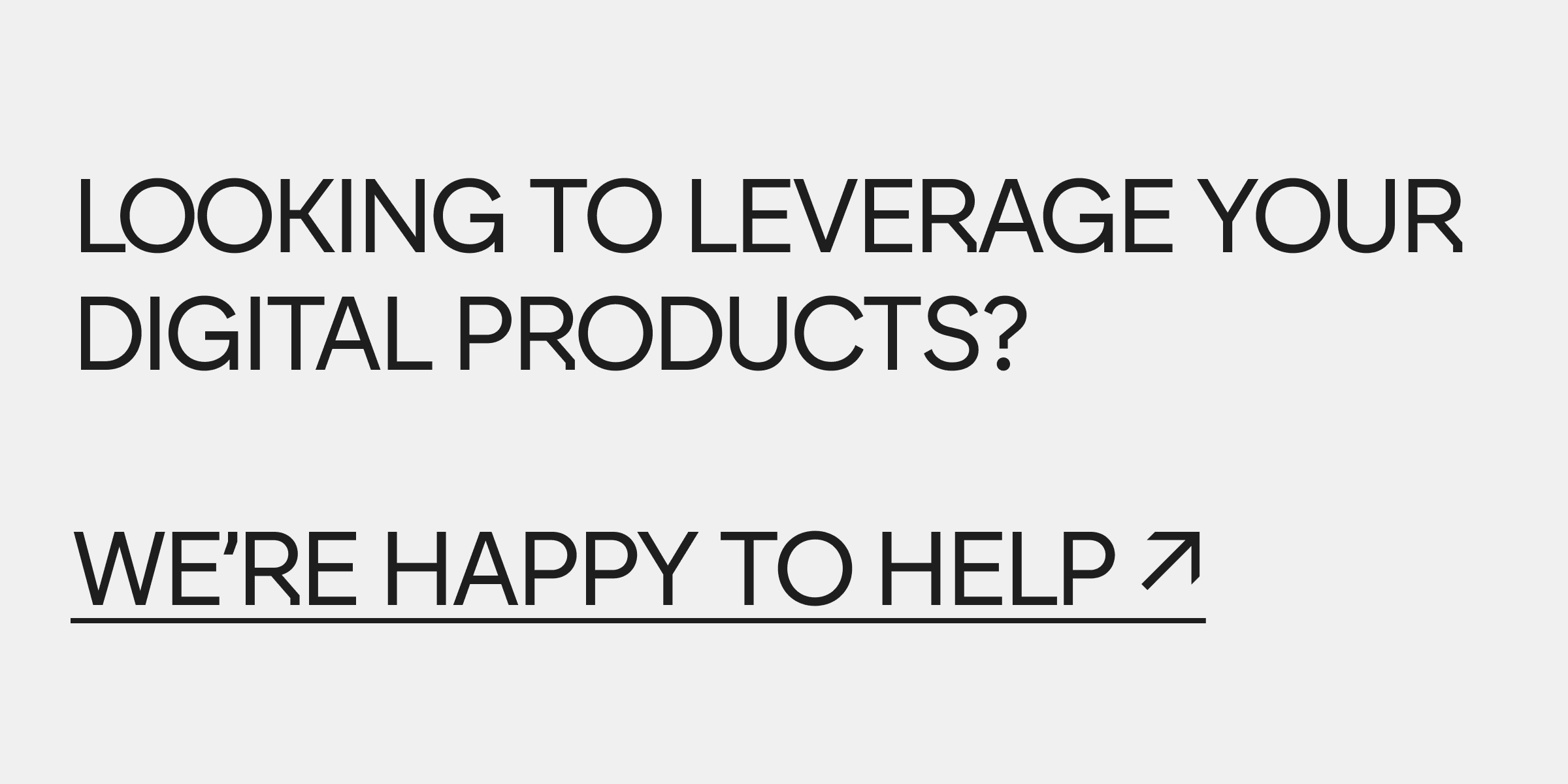In the ever-evolving digital landscape, the internet has become the epitome of interconnectedness, providing unparalleled access to information. In this interconnected world, the success of businesses hinges on a crucial factor: user experience and interface design. Neglecting these aspects can lead to adverse consequences, undermining your business’s potential for growth and revenue generation.
To avoid such pitfalls and ensure your website flourishes, a deep understanding of a great website structure and its significance is essential. This article will unravel the connection between website structure and your business’s triumph, guiding you on the path to success!
What is Website Structure?
Website structure is the organization and interconnection of information within a website. A clear and effective website's structure enhances usability and improves user experience, making it an essential component of the web design process.
A clear and logical structure benefits your business by:
- Improving user experience (UX) through easy navigation.
- Helping SEO by making your site crawlable.
- Increasing conversions by guiding users to take action.
Notably, search engines favor user-friendly websites. A well-organized structure enhances your website's chances of ranking high in search results, driving more traffic and potential customers to your virtual doorstep.
But there's more to it! The success of your website's design inherently depends on its structure. Designers strive to create a seamless user experience, relying heavily on how easily users find what they need. Thus, the organization of every element on your website becomes paramount.
To put it simply, a well-organized site empowers visitors to find what they need independently, without hand-holding.

Types of Website Structure
Website structure types refer to the different ways information and pages are organised and interconnected within a website. Choosing the right structure is critical as it affects usability, SEO and scalability. Let’s look at four common structures in detail.

1. Hierarchical (Tree) Structure
This is the most common structure, organized like a tree with the homepage at the top, branching into main categories, subcategories, and individual pages. It provides clear navigation from general to specific content, making it suitable for websites with extensive content, such as blogs or ecommerce sites. This type is ideal for content-rich websites like corporate sites or blogs. Additionally, understanding the hierarchical sequential matrix can help designers choose the best structure for a website's purpose and audience.
- Benefits of hierarchical structure:
- Homepage links to main categories
- Categories link to subcategories and individual pages
- Easy to scale as content grows
2. Linear (Sequential) Structure
The most popular type, presenting content in a sequential website structure from generic to specific, alphabetical, or chronological order. This type guides users through a predetermined series of steps or pages in a fixed sequence. It is particularly effective for landing pages, courses, tutorials, or websites designed for specific actions like registrations or sign-ups.
Benefits of linear structure:
- Content presented in sequence from start to finish.
- Users follow a specific path through the content.
3. Webbed (Matrix) Structure
In this dynamic website structure, pages are interconnected in multiple ways, allowing users to navigate freely without following a set path. It is ideal for large ecommerce websites or content aggregation sites where products or content can belong to multiple categories simultaneously. Wikipedia is a prime example of a matrix structure
Benefits of Matrix structure:
- Pages linked together through multiple internal links.
- Users can navigate based on preference.
4. Database-Driven Structure
This database website structure relies on databases to dynamically generate content based on user interactions, preferences, or searches. It offers users highly personalized browsing experiences based on search tools, simply by typing in what they’re looking for. Best for dynamic sites with lots of searchable content like: news websites, social media platforms, online banking portals, and streaming services
Benefits of database-driven structure:
- Users navigate primarily through search queries rather than fixed menus.
- Key Components of a Good Website Structure

Choosing the Right Website Structure
Choosing the right website structuring depends on several factors including the site purpose, content volume and target audience. By understanding these factors you can choose a website structure that suits your users and search engines.
For example a hierarchical structure might be good for a content rich blog, a linear structure for a step by step tutorial site. Analyze your user behavior data and the type of content you have and that will guide you to choose the best structure.
Remember the goal is to have a seamless experience for both users and search engines so your website is both user friendly and SEO optimized.
Benefits of a Good Website Structure
A well-designed website structure that follows web structure best practices has many benefits for users and search engines. By organizing content in a logical way a good website structure can improve user experience, SEO and user journey.
Enhance User Experience and Navigation
A good site's structure makes it easy for users to find what they’re looking for, reducing bounce rates and increasing engagement. By providing a clear navigation path users can quickly get to the information they need and have a better experience. A well structured website can also improve accessibility making it easier for users with disabilities to navigate the site. For example a hierarchical structure with defined categories and subcategories allows users to drill down to specific content easily and have a better experience.
A well structured website is essential for search engine optimization (SEO). By organizing content in a logical way search engines can crawl and index the site’s content better and be more visible. A good website structure also helps to distribute link equity throughout the site and improve individual page authority and credibility. For example a clear hierarchical structure allows link juice to flow from the homepage to deeper pages and improve their SEO. Contextual links within content also helps search engines understand the relationship between pages and improve SEO.
Components of Website Structure
A well-structured website relies on several key elements that contribute to its organization, navigation, and overall user experience. These elements include:
- Clear URLs: A clear and descriptive URL structure that makes sense to both users and search engines. This helps in understanding the page’s content and improves SEO.
- Internal Linking: Connecting pages with internal links to enhance website navigation and spread link juice throughout the website. This not only helps users find related content but also aids search engines in indexing your site more effectively.
- Navigation: A clear navigation path that enables users to quickly find what they need. Well-organized menus and breadcrumbs can significantly improve user experience.
- Content Organization: Organizing content in a way that makes sense for users and search engines. Grouping related content together and using categories and subcategories can make your site more intuitive and easier to navigate.
By focusing on these components, you can create a website that is both user-friendly and optimized for search engines.
Internal Linking Strategies in Website Structure
By linking to relevant pages within a blog post, you enhance user experience and website navigation. A well-organized site structure with accessible relevant pages not only helps visitors find content quickly but also supports search engines in efficiently indexing all content, thereby improving overall site performance.
Site visitors benefit greatly from well-designed navigation menus:
- Keep menus clear, concise and logically organised.
- Avoid complex or ambiguous menu labels; clarity is key.
- Use dropdowns sparingly to prevent overwhelming users with too many options.
Contextual Links: User Engagement & SEO
Contextual links placed naturally within relevant content are essential for both user experience and SEO:
- They guide users to related content and keep them on your site longer.
- Search engines use contextual links to understand relationships between pages and improve topical relevance and authority.
- Strong internal linking can increase organic traffic by up to 40%.
Avoiding Orphan Pages: Content Visibility
Identifying site structure issues is crucial to avoid orphan pages, which are pages without internal links pointing to them. They harm both user experience and SEO because they’re hard for users and search engines to find. To avoid orphan pages:
- Regularly audit your site structure using tools like Screaming Frog, SEMrush, Ahrefs etc.
- Link to new or updated content from high-authority pages.
- Include all valuable content in XML sitemaps for effective crawling.
The Strategic Role of Your Homepage as a Central Hub
Your homepage is often the first impression of your brand - it sets the tone for the whole experience and plays a crucial role in your website's structure. A good homepage should:
- Clearly communicate who you are, what you offer and why visitors should care.
- Link to main category pages explicitly.
- Include implicit links through logos in top-left corner.
- Link to homepage labeled “Home” in navigation menus or breadcrumbs.
- Clearly communicate your core message and unique value proposition by focusing on an effective homepage web structure.
- Include explicit links to main category pages for easy navigation.
- Use prominent CTAs guiding users to key tasks.
Content Structure Best Practices
Website's content structure affects readability, engagement, and conversion rates.
Start Broad Then Narrow
Begin with general information about web pages before drilling down into specifics. Avoid overwhelming users with excessive information. Organize your website to present the most general information first, guiding them toward more detailed content.
Know Your Audience
Visualize your users - identify their problems, their information needs. Align your website structure with their needs to create an engaging and pleasant user experience, ultimately boosting response and conversion rates.
Use Storytelling
Lead users through your website as if it were a captivating story - start with an introduction, delve into specific topics, and conclude effectively. Ensure your website's structure complements this narrative flow. Using UX case study pages can help guide users through your site like a story, presenting information step-by-step to enhance comprehension and engagement.

IA is the cornerstone of logical, consistent organization and display of information. By mapping out content, navigation, and function, it allows users to progress from familiar to unfamiliar territory, guiding them towards desired actions.
An effective IA involves building hubs with key general information, leading users to more detailed content within a structured framework. Predictable navigation methods are crucial, as deviating from user expectations can lead to quick disengagement.
A well-constructed website with thoughtful IA enables designers to incorporate changes easily, aligning with business goals and diverse user needs.

How IA Shapes the Digital Product
Similar to a well-designed house or commercial high-rise, IA outlines all elements of a successful digital structure. It clarifies how features interact and behave, ensuring an enjoyable user experience.
IA is diverse, tailored to emphasize the user experience and prompt desired actions. It provides a holistic view of the digital product, aiding continuous improvement and evolution.
Read also: Top Challenges of Creating and Launching a Digital Product
Harnessing the Power of Website Structure
In summary, website structure revolves around organizing pages to promote seamless user experiences with minimal navigation. On the other hand, IA is the blueprint for content, navigation, and function, ensuring cohesive design and enhancing user engagement.
By focusing on these crucial aspects and aligning them with your business goals, you can unleash the full potential of your website, maximizing its impact and driving business success.
Need help optimizing your website for ultimate success? Look no further! At Adchitects, we specialize in creating and improving websites, driving traffic, and generating revenue. Let's build your new website together!
Contact us at hello@adchitects.co or simply click here. Experience the transformative power of a well-structured website and take your business to new heights!








